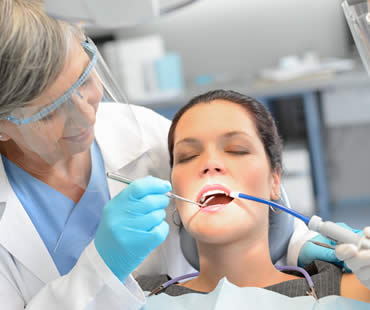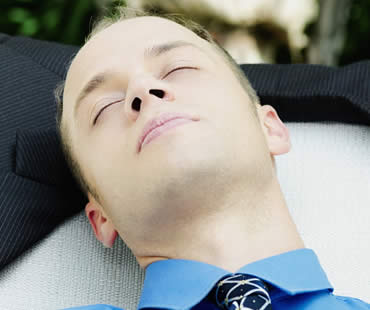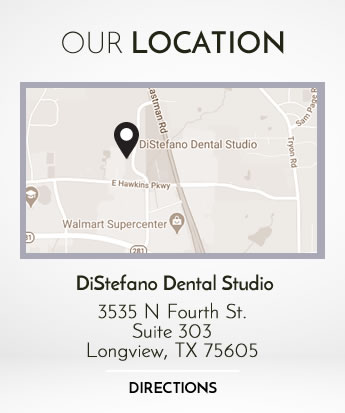
Giving some form of a sedative medication to patients during dental treatment is what sedation dentistry is all about. It causes relaxation and decreases anxiety so that the patient is comfortable and the dentist can work safely and efficiently. Sedation dentistry is most popular for those who experience mild to moderate dental anxiety, patients who have dental phobias, and children who are frightened by dental visits.
There are a number of advantages that sedation dentistry offers to both patients and dentists. Here are some reasons that it is popular with patients:
- Pain is diminished so that the patient hardly feels the instruments, needles, or anything else as part of the treatment.
- Awareness is reduced so that that patient doesn’t realize exactly what is happening and doesn’t keep track of the time spent in the dental chair.
- Anxiety is lessened so the patient feels calm and carefree while undergoing treatment that normally might cause upset.
- Side effects are minimal and rare, making sedation dentistry both safe and effective.
- The gag reflex is reduced so patients who might normally have problems gagging during treatment are able to undergo procedures without issues.
- Time is saved for the patient because often all treatments can be performed in one office visit, instead of having to make several trips and miss more time from work or other activities.
Dentists enjoy benefits of sedation dentistry as well:
- Patients are more cooperative and able to sit still during treatment, allowing dentists to get the job done with less trouble.
- Multiple procedures can be done in a single office visit, so the dentist can accomplish more in a single time slot.
- Reflexes of the patient are more controlled so that movement is less haphazard and the dentist can work more efficiently.
Schedule your appointment at our Longview dental office

Obstructive sleep apnea is a condition created when a portion of the upper airway is blocked, causing breathing interruptions during sleep and low blood oxygen levels. As many as 20% of adults are affected by mild obstructive sleep apnea, while one in fifteen suffers from more severe apnea.
Symptoms of obstructive sleep apnea include snoring, extreme daytime drowsiness, restless sleep, high blood pressure, depression, problems with mental function, as well as a host of other mental and physical concerns. Left untreated, obstructive sleep apnea can lead to a long list of serious medical conditions, including hypertension, heart attack and stroke.
If you have been diagnosed with obstructive sleep apnea, your doctor may initially treat the condition with a CPAP device that you wear while sleeping. While a CPAP machine will reduce the obstruction to the airway, it is not a cure and will only be effective during use. Other non-surgical treatment recommendations may include the wearing of mouthguards to reposition the jaw, sleep position changes, or weight loss.
Tongue muscle advancement involves moving the bony attachment of the tongue muscles, and can be combined with palatal surgery to reduce excess tissues. This therapy may also include removing enlarged tonsils and nasal surgery. These treatments are most often used for milder cases of obstructive sleep apnea.
However, if these treatments do not work or for more severe cases of obstructive sleep apnea, oral surgery offers solutions to correct apnea. Maxillomandibular Advancement is a procedure that repositions the upper and lower jaw and chin to open the airway. This treatment is highly successful and offers the greatest chance of permanent correction in moderate to severe cases of obstructive sleep apnea.
For more information about how surgical therapies and treatments can be utilized to address your obstructive sleep apnea, consult with a qualified oral and maxillofacial surgeon.
Our dental office is located in Longview

In order to ensure your comfort and ease during a dental procedure, sedation dentistry is often the best option. Many levels are available, including conscious oral sedation, inhaled sedation, and intravenous (IV) sedation.
Conscious oral sedation minimizes patient anxiety while allowing the patient to remain partially alert. Oral sedatives are used to accomplish minimal to moderate sedation. They come in the form of a pill, and are often taken within an hour of your dental procedure. Some dentists recommend a mild oral sedative the night before an appointment to ease anxiety and ensure a good night’s rest.
Depending on the dosage and on the individual recipient, an oral sedative can sometimes cause the patient to “doze off,” but the patient will never be fully unconscious and will awaken with a gentle shake. Even though you are never fully asleep during conscious oral sedation dentistry, you may not drive yourself home because you will not be fully alert.
Inhaled sedation utilizes nitrous oxide, also known as “laughing gas.” This gas is inhaled through a mask while your dentist controls the amount you receive. This type of sedation allows a patient to relax and to be fully comfortable, but to still be responsive. Nitrous oxide sedation has a tendency to wear off quickly. Because of this, you may be able to drive yourself home after your procedure.
IV sedation (sometimes known as “sleep dentistry”) provides the deepest, most relaxed sedation during dental procedures. Despite the name, IV/sleep sedation does not cause you to completely lose consciousness. Because the drugs used naturally produce a full or partial memory loss while active in your system, you may not remember anything that happened during your procedure. IV sedation is the fastest of the sedation dentistry methods. The amount of sedation is controlled by your dentist. You should not drive after IV sedation, as you may not be fully alert for a period of time.
Talk to your dentist about which sedation is right for you to ensure your dental procedure goes well and that you are comfortable throughout treatment.
Schedule your appointment at our Longview dental office

It’s not uncommon for children to be afraid of going to the dentist. Let’s face it, many adults don’t like visiting the dentist either. However adults mainly don’t want to take the time or don’t want to hear the news that they aren’t taking good care of their teeth. It’s different with kids though, who often have a real fear of the dentist, equipment, and the unknown situation. If your child is one of those who experiences anxiety at the mention of the dentist, here are some things you can do to help ease those fears.
Use visual aids:
It is helpful for some children to watch a video or read a book that will help them become more familiar and comfortable with going to the dentist. Your local library or the internet both likely offer resources for this purpose, and bookstores have books and DVDs for purchase. These visual aids help kids know what to expect in visiting the dentist, and what their role is in the process.
Visit the office:
Take your child to the dentist’s office prior to your appointment so they can observe the office, meet the staff, and see the area and tools used for examinations. The staff may even give your child an explanation of the tools that dentists use for checkups. Your dentist wants children to feel comfortable and confident in getting dental treatment, so most offices do their best to help your child adjust.
Explain the importance:
Even though fear sometimes overtakes logic, it’s still important to explain to your child the reasons for seeing the dentist. Help them understand the benefits of checkups, and the oral health consequences that may occur by not caring for their teeth and getting regular checkups.
If you live in the Longview area contact us today

If you are either planning to undergo cosmetic dental procedures or necessary treatments for dental problems, there is a case to be made for considering sedation dentistry. Sedation dentistry refers to the use of medications in varying forms to calm and relax you prior to and during a dental procedure. Just a few reasons to consider dental sedation include:
- Dental sedation can be used for essentially all regular dental procedures. Under sedation, your dentist can accomplish far more in one appointment, meaning less overall time for you in the dental chair. Procedures that may normally take 2 or 3 visits to the dentist can be completed all in one visit with the help of dental sedation.
- Normally, dentists do not like to work on both sides of the mouth at the same time as this requires anesthesia to each side and could cause the patient to bite their tongue. Sedation dentistry allows your dentist to work on both sides of the mouth in one sitting.
- Dental sedation allows you to feel relaxed and free from stress while the actual procedure is being performed. In many cases, even though you are still conscious, you will not remember any of the actual time you spent in the dentist chair.
With sedation dentistry, there is no need to dread dental treatments and procedures. Your fears and anxiety should not deter you from seeking the cosmetic or restorative dental care that you desire. Consult with your dental professional about the options offered for sedation, and schedule your oral care with the confidence that you will have a calm and pleasant experience while improving your smile.
Our dental office is located in Longview

Many types of cosmetic dentistry procedures such as crowns, bridges, tooth implants, or other invasive procedures require some kind of anesthesia in order to be performed in comfort for the patient. Even a procedure like porcelain dental veneers can be aided by the addition of some kind of sedation dentistry, especially if the patient is experiencing anxiety or fear regarding the treatment. For any patient seeking a more relaxed cosmetic dental experience, sedation dentistry presents several options.
Inhaled sedation, or nitrous oxide, is more commonly known as “laughing gas.” It is inhaled via a mask and is controlled by your dentist. It is a light sedation, and allows you to remain completely responsive and compliant to instruction. Nitrous oxide sedation wears off quickly; because of this, you may be able to drive yourself home after your treatment.
Conscious oral sedation reduces your anxiety while still allowing for responsiveness to requests and directions. Oral sedatives are typically prescribed in pill form, and can be taken up to an hour before your dental procedure. Some dentists believe that taking a mild oral sedative the night before treatment can alleviate anxiety and ensure proper rest. You should not drive yourself home if you have taken an oral sedative for your dental treatment. You will not be fully alert.
IV sedation is also known as “sleep dentistry.” It provides the most relaxed dental experience, allowing you to be deeply sedated while never completely unconscious. A natural effect of the drugs is full or partial memory loss of the time during its use, so you may have no memories of your procedure. You should never drive following IV sedation, and you may not be fully alert for several hours. Plan to go home, rest, and sleep.
Your cosmetic dentist wants you to be comfortable throughout your dental therapy and will know which sedation dentistry option is right for your particular cosmetic dentistry procedure. Talk to your cosmetic dentist today about any concerns you have regarding your treatment so that you may have the most positive, pain and anxiety-free experience possible.
We look forward to seeing you in our Longview dental office









